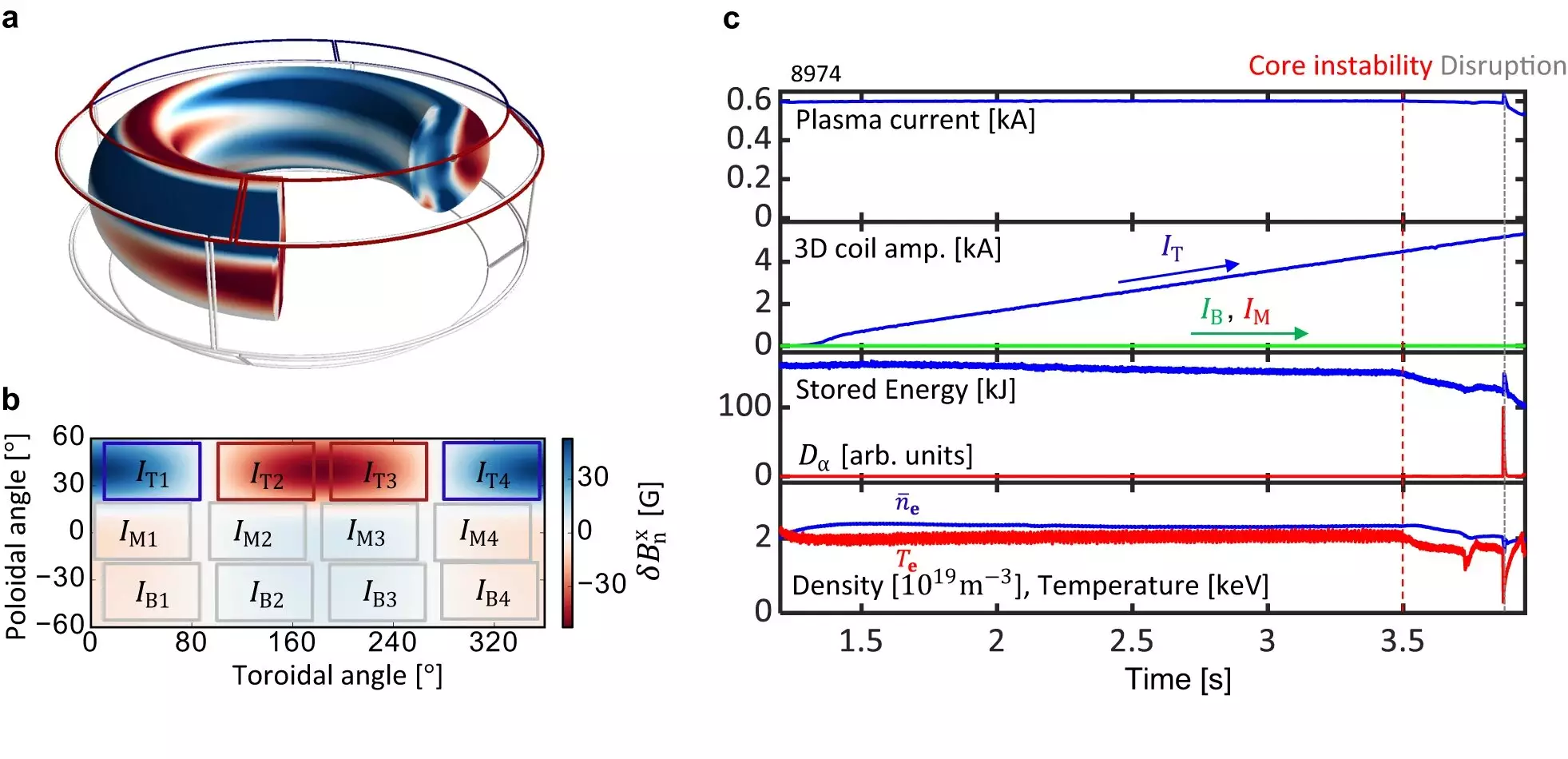In a move reminiscent of the Japanese art of Kintsugi, where broken pieces are mended with gold to create something even more beautiful, scientists are redefining the way plasma, the super-hot state of matter, is managed for use as a power source. Instead of viewing imperfections in magnetic fields as obstacles, researchers are utilizing these flaws to enhance and optimize plasma performance simultaneously, as described in a recent paper published in Nature Communications.
The team, led by PPPL Physicist Seong-Moo Yang, has successfully validated a systematic approach to customizing magnetic field imperfections, known as error fields, to tailor the plasma for power generation purposes. Traditionally, error fields were seen as issues that could disrupt fusion reactions and damage equipment. However, this groundbreaking method identifies and implements optimal error field corrections to improve plasma stability under various conditions, ultimately bridging the gap between current fusion technology and future energy needs.
One of the significant challenges in managing fusion reactions is achieving stability in both the core and edge of the plasma simultaneously. The team’s research demonstrates that by adjusting the error fields, they can effectively stabilize both regions without compromising overall performance. This innovative approach not only eliminates instabilities at the edge of the plasma but also maintains core stability, a critical step in advancing fusion power technology.
Implications for Future Fusion Plants
The implications of this research extend beyond the current experiment, with potential applications in the design of future tokamak fusion pilot plants. By fine-tuning error field configurations, researchers can enhance efficiency and reliability in plasma management, bringing us one step closer to realizing fusion power on a larger scale. Furthermore, ongoing efforts to develop an artificial intelligence (AI) control system aim to streamline the process and make real-time adjustments more efficient, paving the way for practical implementation.
While the study predominantly focused on internal magnetic coils within the fusion vessel, there is growing interest in exploring the effects of external magnetic coils on plasma control. With the fusion community’s shift towards external coil configurations to mitigate heat-related damage, future research in this area could provide valuable insights into optimizing plasma stability and performance.
The research team’s innovative approach to plasma management offers a fresh perspective on harnessing imperfections to enhance performance, much like the art of Kintsugi. By leveraging error fields as a tool for stability, scientists are pushing the boundaries of fusion technology and setting the stage for a new era of energy production.


Leave a Reply